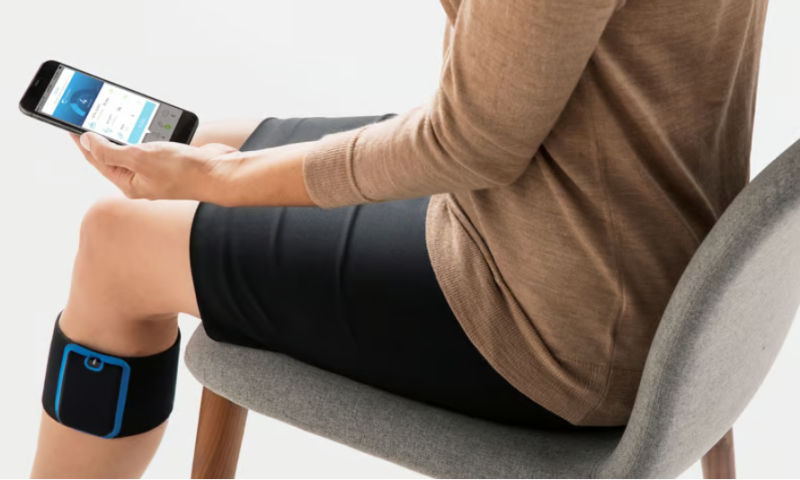A year after its neuromodulation device became the first non-drug treatment cleared by the FDA to relieve chronic pain associated with fibromyalgia, NeuroMetrix is one step closer to adding another first-of-its-kind indication to the technology—which has also been cleared to treat more general cases of chronic pain in the lower extremities.
At the American Society of Clinical Oncology’s annual meeting in Chicago this weekend, NeuroMetrix is set to present early results of a study evaluating whether the Quell nerve stimulation system can treat peripheral neuropathy caused by chemotherapy, too.
Indeed, the device is “promising” in relieving some of those symptoms, the study’s researchers wrote in an abstract published ahead of the presentation, adding that a confirmatory trial of the tech is “highly warranted.”
The blinded and randomized study recruited 142 people with chemotherapy-induced peripheral neuropathy, or CIPN, an often painful condition that’s estimated to affect between 30% and 60% of people who undergo neurotoxic chemotherapy and occurs when cancer treatments damage the nerves beyond the brain and spinal cord.
The participants were assigned to use either a placebo device or the Quell system—which delivers its neuromodulation therapy through a band that wraps around the upper calf—for three one-hour sessions every day for six weeks. While the Quell device emitted its nerve stimulation treatments throughout each entire session, the outwardly identical placebo system did so for only 2.5 minutes per hour.
At the end of the study period, the Quell group reported an average improvement of 11.6% in their quality of life—the trial’s primary endpoint, based on the European Organization for Research and Treatment of Cancer’s CIPN-specific survey—compared to an 8.7% boost in the placebo group.
The differences between the two groups’ improvements were even starker in a handful of the study’s secondary outcomes: Those assigned to the Quell treatments saw symptoms of hot/burning pain, sharp/shooting pain and cramping all improve by about 50% compared to their baseline levels, while the placebo device users experienced a dip of only about 30% in those categories.
The Quell device was less successful in treating other effects of CIPN, however. It improved the patients’ tingling feelings by only 27.5%, versus a 23.7% improvement in the placebo group, and eased numbness by 24%, just a bit above the 18.4% boost among the placebo device users.
In a company announcement Wednesday, NeuroMetrix CEO Shai Gozani, M.D., Ph.D., called the results “exciting.”
“We look forward to obtaining further details on the trial results over the coming months and will correspondingly finalize our regulatory strategy, potentially to include a near-term regulatory submission for a Quell CIPN indication,” Gozani said, adding that the company is also “enthusiastic” about supporting the researchers throughout a further confirmatory trial of the device’s use in CIPN.
Once those results come through, an FDA signoff could come sooner than later, since NeuroMetrix has already secured the agency’s breakthrough device designation for Quell to be used as a CIPN treatment. And if that regulatory green light does arrive, it would represent another history-making win for the technology, since there are currently no FDA-cleared treatments specifically for CIPN, as Gozani noted in the release.

